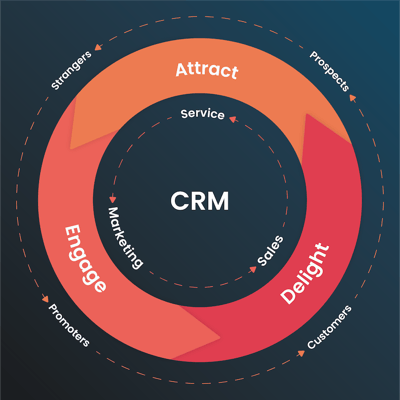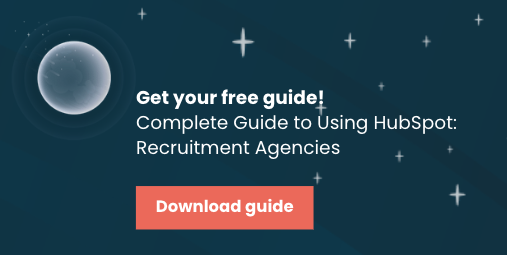Recruitment marketing drives higher volumes of qualified candidates to apply for a role with best-practice marketing automation, optimisation and candidate relationship management (CRM). But what are the experiences and touchpoints within a typical recruitment marketing journey? Read on to learn more about this.
Some of the most difficult challenges in the recruitment industry are attracting qualified candidates and keeping them engaged. The question is, how can you differentiate yourself from the competition? and the answer is recruitment marketing, also known as inbound marketing by HubSpot. This refers to a business strategy for attracting candidates by creating valuable content and experiences that are tailored to them.
Inbound Marketing meets recruiting
According to Hubspot “The inbound methodology is the method of growing your organization by building meaningful, lasting relationships with consumers, prospects, and customers. It’s about valuing and empowering these people to reach their goals at any stage in their journey with you.”

Why? Because when your customers succeed, you succeed.
The inbound methodology can be applied in three ways:
- Attract: drawing in the right people with valuable content and conversations that establish you as a trusted advisor with whom they want to engage.
- Engage: presenting insights and solutions that align with their pain points and goals so they are more likely to buy from you.
- Delight: providing help and support to empower your customers to find success with their purchase.
Now that we comprehend HubSpot's methodology, it's time to put it into practice to meet recruiting.
Related article: check out our recent blog to learn more about recruitment marketing by using HubSpot CRM.
Attract
Recruitment marketing strategies that attract your target candidates are tied to content creation and relationship development.
As a hiring manager or a recruitment company, you are appointed to uncover the best candidates. To be able to reach out to the right candidates, start by creating and publishing open positions on your career page and promote additional information — such as the company's culture and employee branding by creating blog articles, content offers, and social media — that provide value. Dynamic careers site content showcases the company’s employer value proposition and empowers the right-fit candidate to apply.
In order to follow up on this approach, company’s careers website attracts more high-quality candidates with:
- Expression of interest forms and CTAs
- Company newsletter sign-ups
- Event registration forms
- Alumni talent network registration forms
- Internal opportunity registration forms
- Candidates sign up and enter the talent network
These ‘Candidate magnets’ allow passive talent to connect with the company they’re interested in.
Engage
When using inbound strategies to engage your audience, ensure you’re communicating and dealing with leads and candidates in a way that makes them want to build long-term relationships with you. When using these engagement strategies, inject information about the value your business will provide them with.
As a customer-centric platform, HubSpot offers the tools you need to create solid relationships and nurture leads who have converted. By leveraging the CRM data and knowledge you have about your leads, you can personalize your marketing efforts from email nurturing to creating campaign where you connect all your marketing assets for all different stages of your customer journey and ensure you are targeting the right people at the right time, with the right content.
One way to do so is by creating and scheduling automated workflows. A recruitment marketing automation platform handles manual tasks, reminders, and follow-ups. These scheduled workflows place the candidate journey design in the hands of the recruiter. Therefore, candidates are carefully engaged with the right message, at the right time, on the right platform.
The recruiter maintains a positive candidate experience with quality talent anytime, anywhere using preset nurture flows and automated follow-ups such as:
- With SMS job alerts, and email nurtures candidates are kept interested and informed
- Chatbots help candidates seek out the information they need. They also answer any questions about salary expectations and role requirements
- Targeted nurture flows automatically progress candidates further down the funnel based on their level of engagement
Once you have all this information and data coming to your HubSpot database, now it’s time to get help from the system that assesses and scores candidates accordingly, and high-quality applications progress to the next stage. Candidate hits “apply” and information is fed into an applicant tracking system (ATS) which is integrated with your CRM. The recruiter presents the hiring manager with the best options and if the candidate is not chosen for this round, the information is stored in an ATS for future reference. Best-fit candidate is hired. Future-fit candidates are on top of the recruiter’s list for next time. And the recruiter now has a steady pipeline of candidates ready for when a role arises.
Related link: check out the HubSpot app marketplace and connect your favourite tools to HubSpot.
Delight
When using inbound strategies to engage your audience, ensure you’re communicating and dealing with leads and candidates in a way that makes them want to build long-term relationships with you. When using these engagement strategies, inject information about the value your business will provide them with.
Specific engagement strategies may include how you handle and manage your candidates. Jobseeker activity and interaction data is captured to build rich candidate profiles. Focus on how a smart career site pulls in information from multiple sources and channels. Additionally, be sure you have sophisticated candidate relationship management (CRM), scoring, and insights to store candidate details and collect data on their interactions. This will ensure all offers end in mutually beneficial agreements for candidates and your company — meaning, you provide value for your right-fit talents.
HubSpot candidate relationship management (CRM) helps sift through candidates with effective segmentation. Powerful CRM software such as HubSpot helps the recruiter transition from reactive recruitment to a proactive sourcing strategy – they no longer rely on reactive hiring or outsourcing.
In addition, interests, diversity and inclusion considerations, and experience level segment candidates will happen since HubSpot CRM automatically identifies best-fit candidates together with surfacing hidden candidates along the way. Automated talent pipelining also gives the recruiter more time to engage with suitable candidates thus, recruiter works faster and smarter with a 360-degree view of their talent pipeline.
- Consolidated information lets the recruiter analyse, prioritise and build high-quality talent pipelines
- This 360-degree view offers more accurate forecasting
- Working smarter, not harder, the recruiter has more time for more high-value activities, leading to a better candidate experience and competitive edge
- Data and insights help hiring teams optimise their approach
- The recruiter leverages new insights to adapt and optimise their approach
- Focusing investment in the right channels, the recruiter can reduce their sourcing spend and convert even more quality candidates
Download our free guide: Learn more about how to use HubSpot CRM if you work in a recruitment or staffing agency.
We want to help you
We help you implement a digital and modern solution that enables you to gather and store the information you need about your clients and candidates to create outstanding experiences for them. With the challenge of attracting the right candidates and keeping them engaged, you need to be able to contextualize and personalize your offerings to their needs, and to do so you need the right technology.

